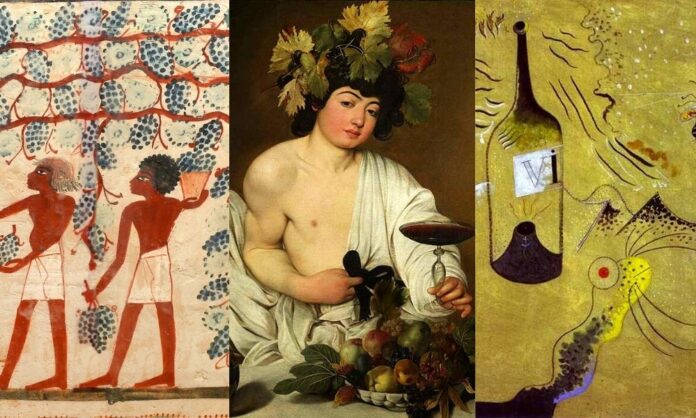
Wine and Art? Learn about the history of wine in art and the most iconic and famous works of art of wine in pictorial art. From Caravaggio and Michelangelo, up to Monet and Picasso. You will also find examples of wine in art, from sculpture to painting, from Egyptian art to modern and contemporary art. Do you want to recommend a work that represents wine in the art of relief? Write to us.
INDICE
- Wine in Ancient and Classical art
- Wine in medieval art
- Wine in the art of the Renaissance and Baroque
- Wine in Modern and Contemporary Art
- Top 20 Famous Works and Paintings on Wine
Wine in Ancient Art
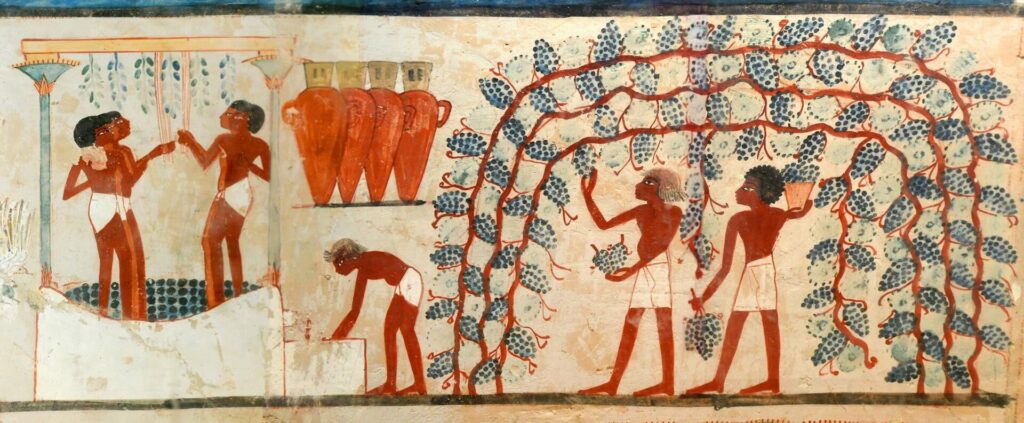
Wine and ancient art? Wine is undoubtedly the drink that has most inspired artists and poets over the centuries in the production of artistic works, both in painting and in sculpture.
The first evidence of wine in pictorial art can be found in the two-dimensional representations (bas-relief and painting) of ancient Egyptian art, which boasts ancient origins prior to the fourth millennium BC. In ancient Egyptian art, wine held an important sacral, curative and even funeral value, as evidenced by the grape seeds found in Egyptian tombs. Wine in Egypt was omnipresent in the feasts dedicated to Osiris, the god of wine, real alcoholic banquets whose frescoes and bas-reliefs of Egyptian art preserve the memory.
Furthermore, Egyptian art was the first to depict, in the walls of the tombs, scenes of vine growing forms but also the grape harvest and winemaking.
Wine in Classical Art
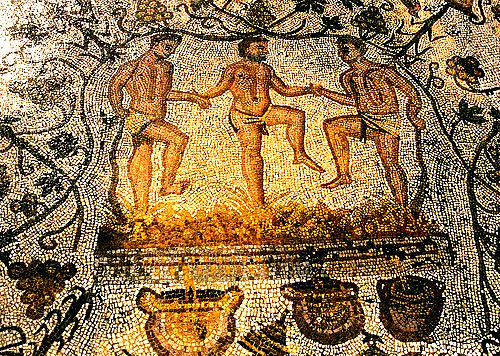
What are the works of art on wine in Classical pictorial art? Following the Egyptian art, wine found great space in the ancient art of the Phoenicians, Greeks and later the Etruscans.
The spread of wine in ancient art in the West finds its first origin and maximum expression in Hellenic vase art. In fact, there are countless examples of Craters (kratḕres), that is large vases and amphorae used in the Symposiums to mix and dilute wine and water, depicting images related to wine and its consumption.
We owe to the Greeks the cult of Dionysus who gave wine a divine connotation, and which inspired the image of wine in classical art.
The Greek iconography of Dionysus, handed down by the Romans under the name of Bacchus, corresponds to an indolent young man with androgynous features. The charm of the archaic god of wine and intoxication has continued to inspire artists and poets over the centuries in the classical, Hellenistic, modern and Renaissance periods.
The imaginary of wine in art in the pictorial art of Greek and Roman inspiration was also recovered with the currents of French neoclassicism and academicism.
In fact, Dionisio inspired many famous artists such as Michelangelo, Titian, Caravaggio, but also poets such as Francesco Redi and Lorenzo de ‘Medici. Also mentioned by philosophers such as Schopenhauer and in particular Friedrich Nietzsche, who in his birth of the tragedy contrasted the Dionysian with the Apollonian.
Wine in Medieval Art
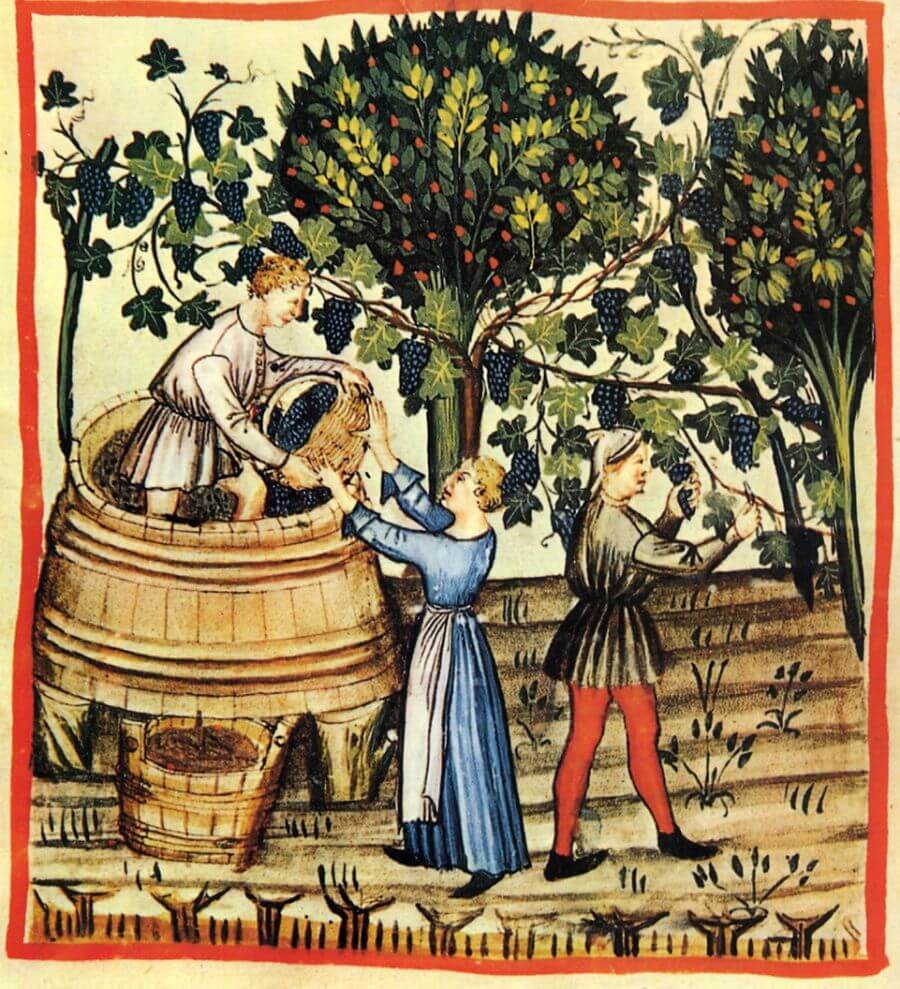
What are the works of art on wine in the Middle Ages? With medieval art and the reign of the Lombards, agriculture and viticulture experienced a period of decline and the Arab dominations in southern Europe (600-1000 AD) caused a further downsizing of wine and its representation in art, with the ban on viticulture in all the occupied territories.
Although the anti-classicism of medieval art rejected the heritage of classical iconography linked to the exaltation of intoxication conferred by wine, monasticism became the guardian of viticulture and its unprecedented artistic representation in the ‘Tacuina sanitatis’. In fact, wine became part of the liturgy of the Eucharist allowing the maintenance of the viticultural tradition by the monks, there is in fact evidence of viticulture in the art of miniatures.
The miniatures made in the monasteries placed the emphasis no longer on the ecstasy linked to wine, but on the work in the vineyard, the grape harvest and winemaking. The hedonistic and epicurean imagery of wine was therefore replaced by the principle of the Ora et labora ‘of Benedictine inspiration.
Viticulture and wine in the art of painting rediscovered their centrality with the age of the municipalities with technological developments and innovations in the agricultural field. This process of development and economic growth favored a growing recovery of the wine iconography of classical art, creating the conditions for a new humanism of the famous grape lysergic.
Wine in the Art of the Renaissance
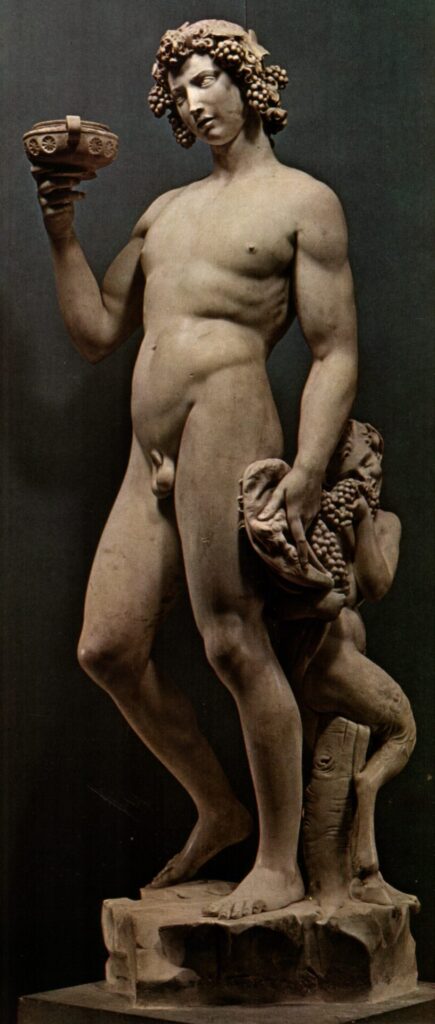
What are the works of art on wine at the time of the Renaissance? In the Renaissance, wine and the art linked to wine delighted noble courts such as that of the Medici, becoming symbols of refinement and the exclusive privileges of the hedonistic pleasure associated with it.
In fact, the Medici became patrons and promoters of the recovery of the cult of classically inspired wine, as exemplified by the famous poem by Lorenzo the Magnificent “The triumph of Bacchus and Ariadne” inspired by Horace’s philosophy of ‘carpe diem’.
Between 1400 and 1500 there are countless testimonies of works dedicated to Bacchus, including the famous marble statue by Michelangelo Buonarroti, Titian’s Bacchus and Ariadne and Leonardo da Vinci’s Bacchus. The quintessence of the traditional iconography of Bacchus is the famous Bacchus by Caravaggio of 1596-1998, commissioned by Francesco Maria Bourbon and dedicated to Ferdinando I de ‘Medici.
Parallel to the production of classical-inspired works of art on wine, wine in pictorial art also continued in the monasteries with the creation of miniatures depicting the grape harvest and winemaking.
Wine in the Baroque Art
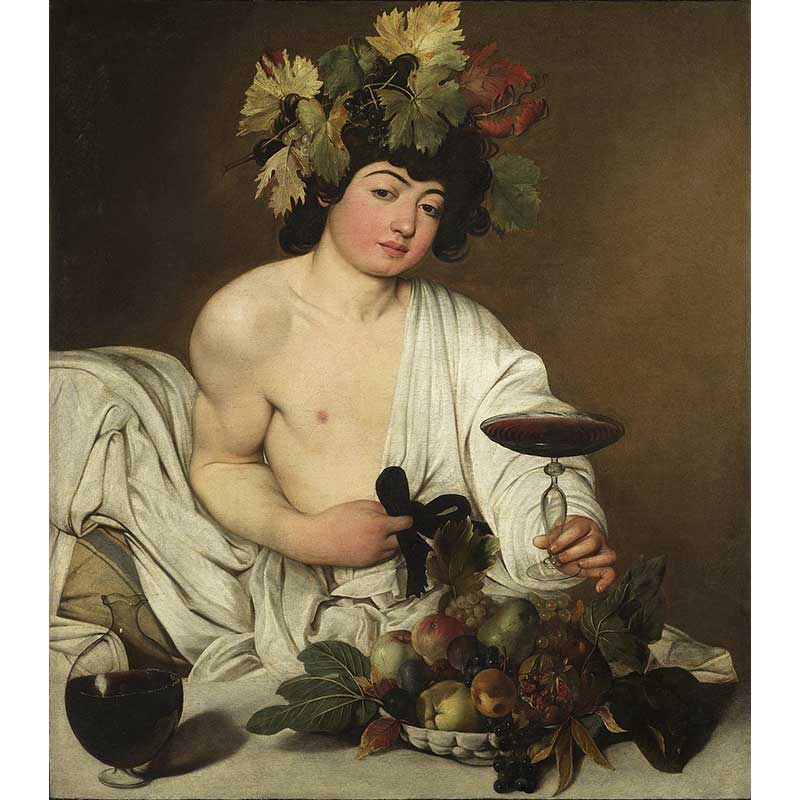
The imaginary of the classically inspired wine continues to evolve in art acquiring an increasingly complex psychological introspection. In addition to Caravaggio’s Bacchus, we can mention Gian Lorenzo Bernini’s’ Bacchanal: faun molested by cupids’, Pieter Paul Rubens’ Satyrs and Diego Velàzquez’s’ Triumph of Bacchus’. Also of great interest are works that deviate from classicism such as Jan Vermeer’s ‘Glass of wine’
From the 1500s and 1600s, wine found a lot of space in art in Flemish and Italian painting: works of art depicting banquets and everyday moments of wine consumption.
In art in the Baroque period, wine and grapes are recurring subjects in many representations of Nature Morte by many artists in Italy, Flanders, but also in Spain and France.
Virtuous examples in Italy can be represented by the works of art by Michelangelo Merisi in 1600 and Bartolomeo Bimbi in 1700.
Triumph of Bacchus by Bouguereau
Wine, bucolic life, still lifes and the iconography of Dionysus also raged in much of the art of neoclassical inspiration and in academicism until the end of the 1900s. Among these you can find virtuous examples of the presence of wine in art with the works William-Adolphe Bouguereau and Thomas Couture.
Wine in Modern and Contemporary Art
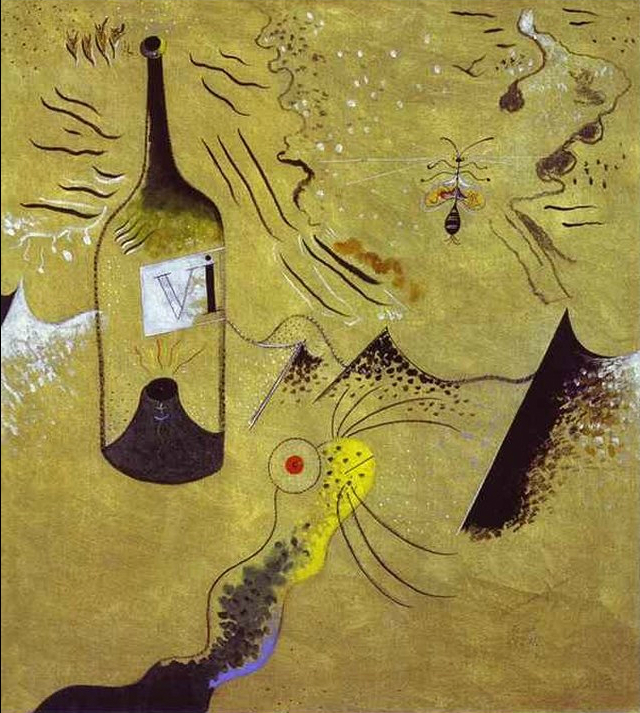
Subsequently, starting from 1900, the presence of wine in figurative art has taken very heterogeneous and non (combinable) paths, freeing itself from the practice of classic and stereotyped iconography.
Many artists have tried their hand at depicting bottles of wine in their own style: we can mention, for example, those of Claude Monet in Impressionism, Joan Miró in Surrealism, Picasso in Cubism and De ‘Chirico and Giogio Morandi in Metaphysics.
Wine in art therefore acquires its own dignity linked primarily to the artist’s artistic sensitivity, to his personal interpretation and intimate bond with it.
BEST 20 WINE-THEMED WORKS OF ART
What are some of the most historic and iconic wine-themed works of art? Discover wine in art, with the sculptures and paintings that best interpreted the theme of wine in art. Wine and Painting? You will find examples of wine in ancient art, but also in medieval, Renaissance and modern art.
Caravaggio, Bacchus (1596), Firenze, Uffizi

Bartolomeo Bimbi, Uve (1700) Poggio a Caiano (Prato) Villa Medicea
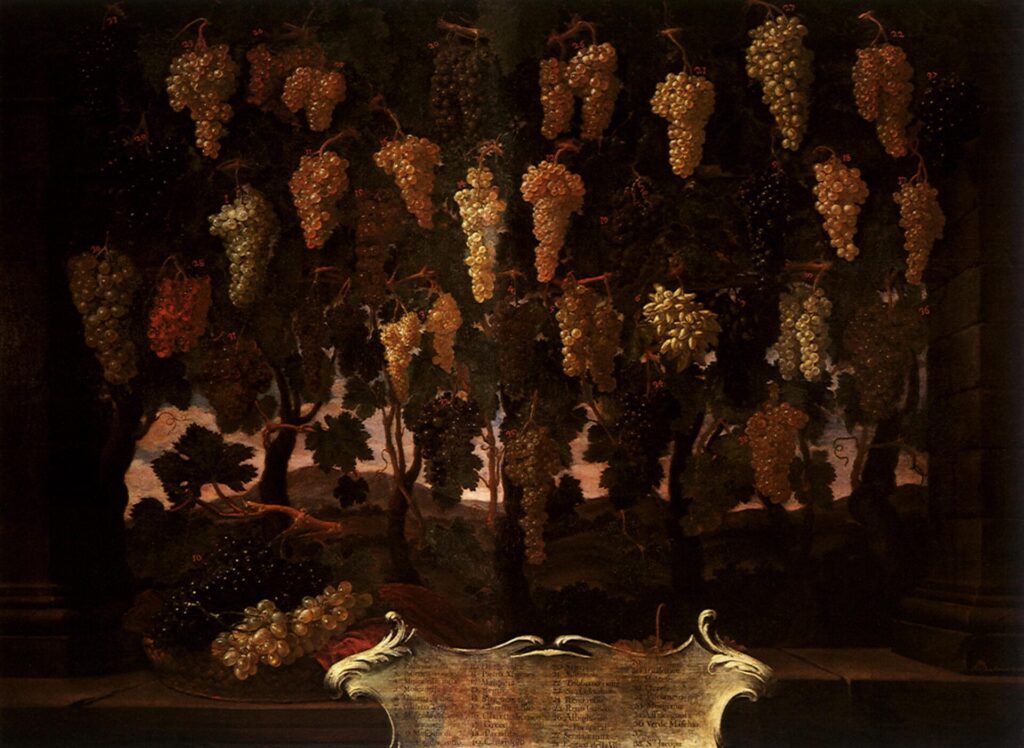
Michelangelo, Bacchus (1496, 1497), Firenze, Museo Nazionale del Bargello
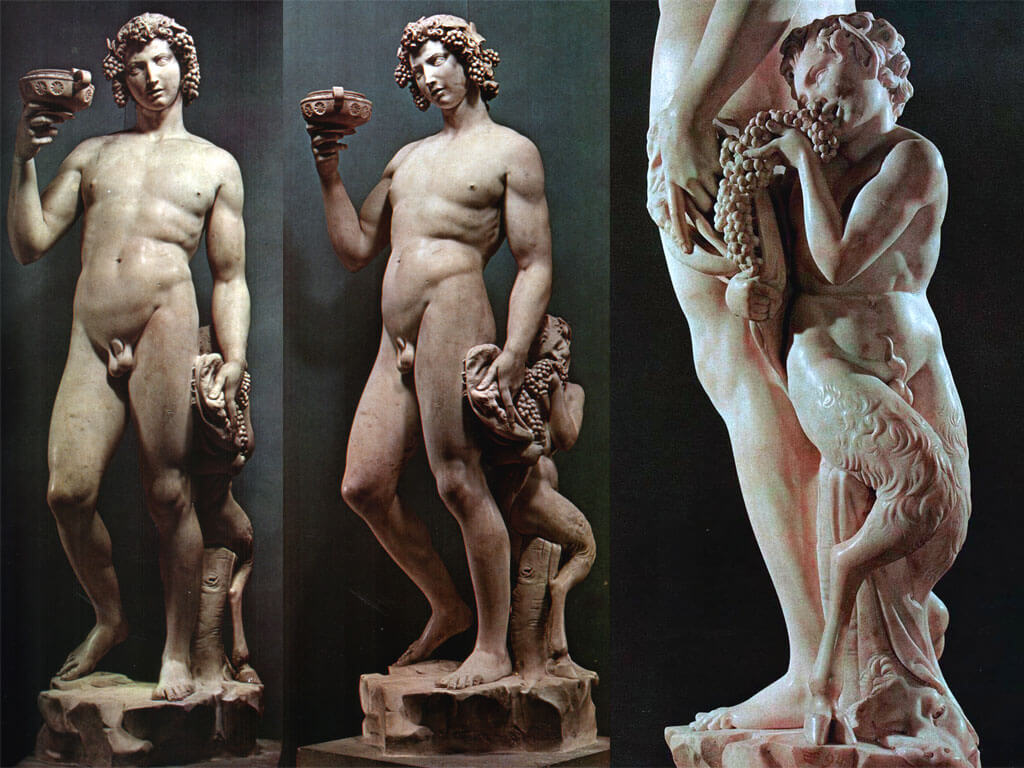
Maestro Venceslao, October (1390) Trento, Castello del Buon Consiglio
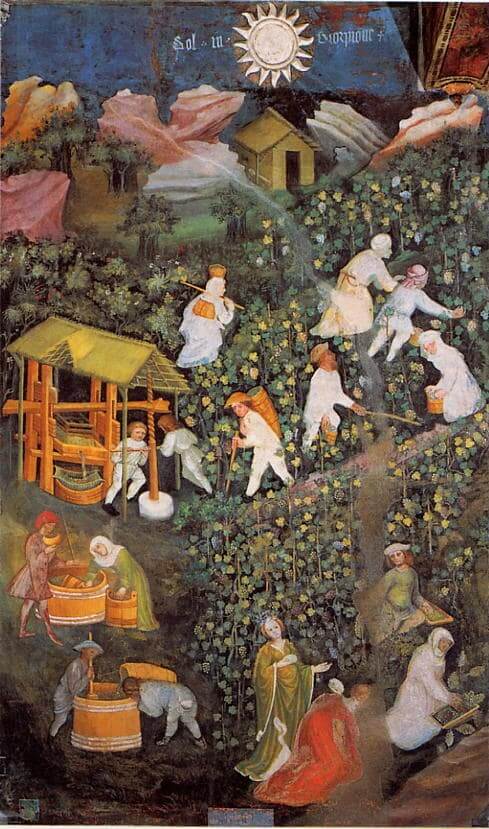
Gerrit Van Honthorst, The drunk violinist (1623), Madrid, Museo Thyssen Bornemisza
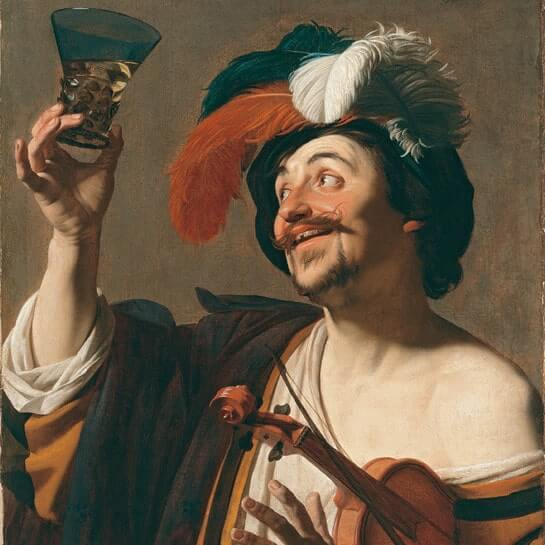
Jan Steen, The rhetoricians at the window (1662) Filadelfia, Museum of Art
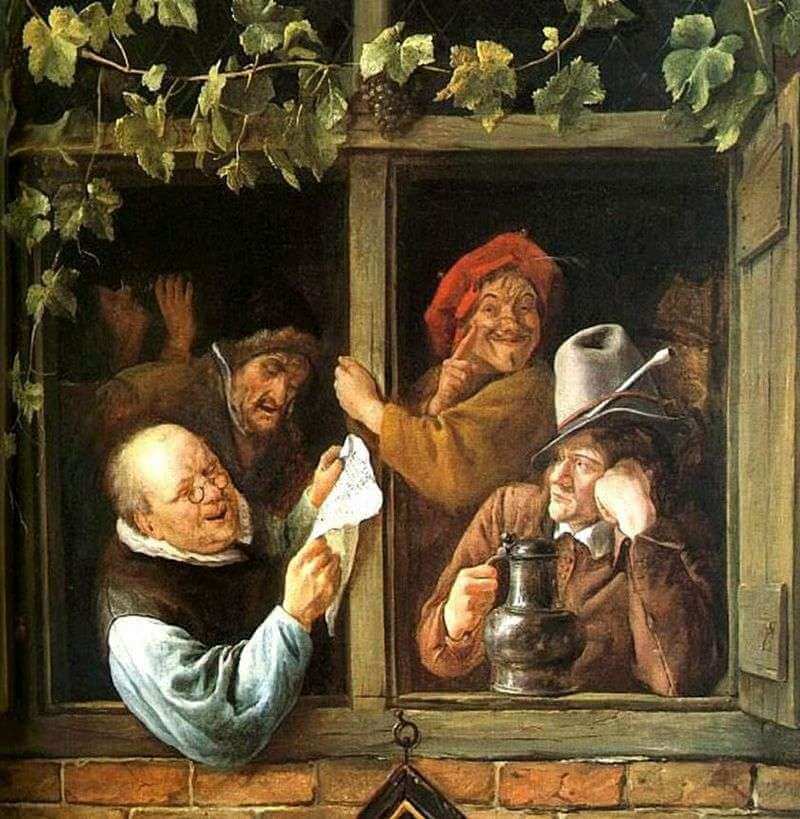
Tiziano, Baccanale (1523) Madrid, Prado
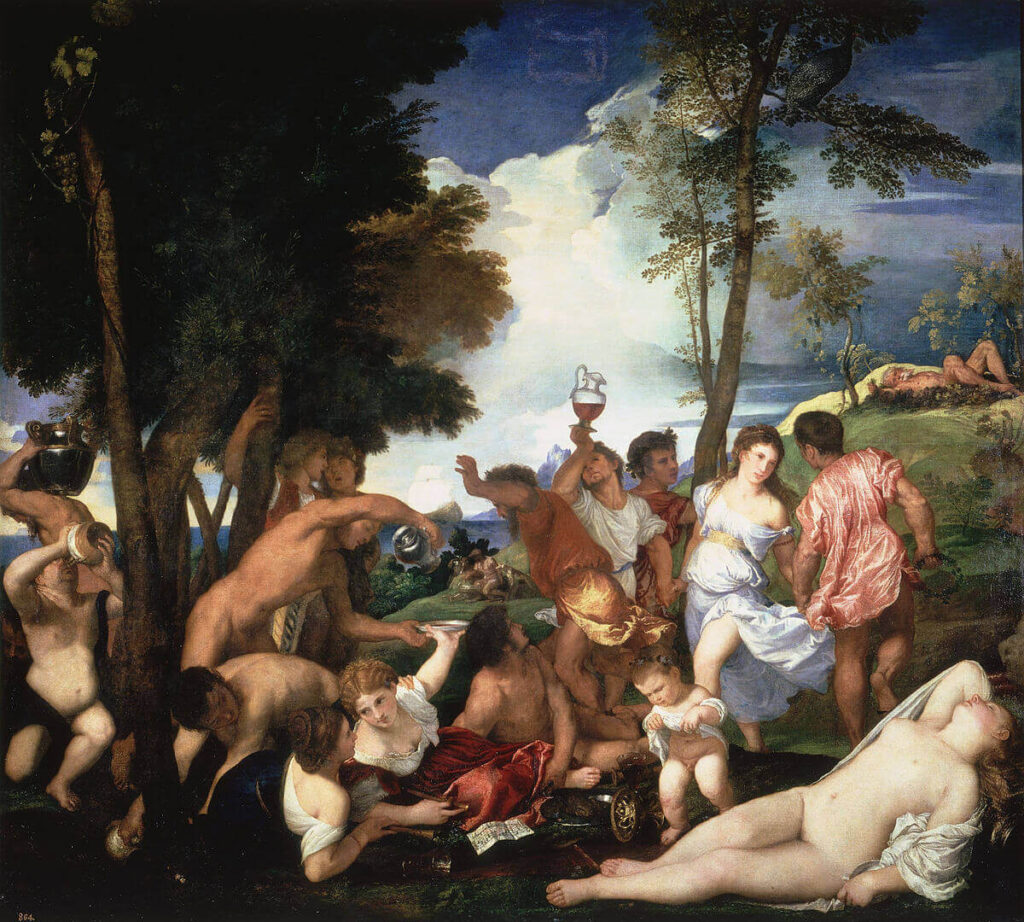
William-Adolphe Bouguereau – La Vendangeuse (1875), Art Renewal Center Museum
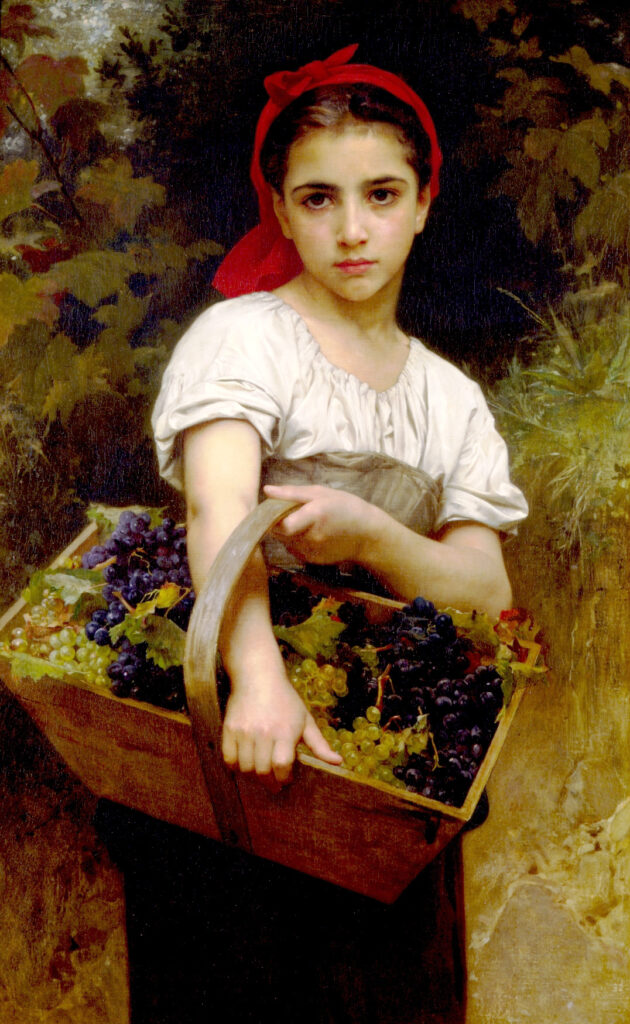
Nicolas Poussin, Baccanale con suonatrice di Liuto (1631) Parigi, Louvre
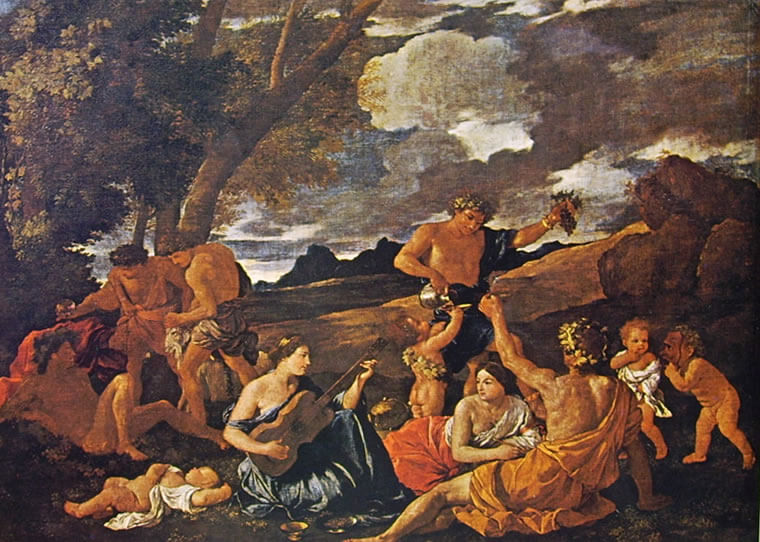
Baccanale: fauno molestato da cupidi’ di Gian Lorenzo Bernini (1616–17) Metropolitan Museum of Art
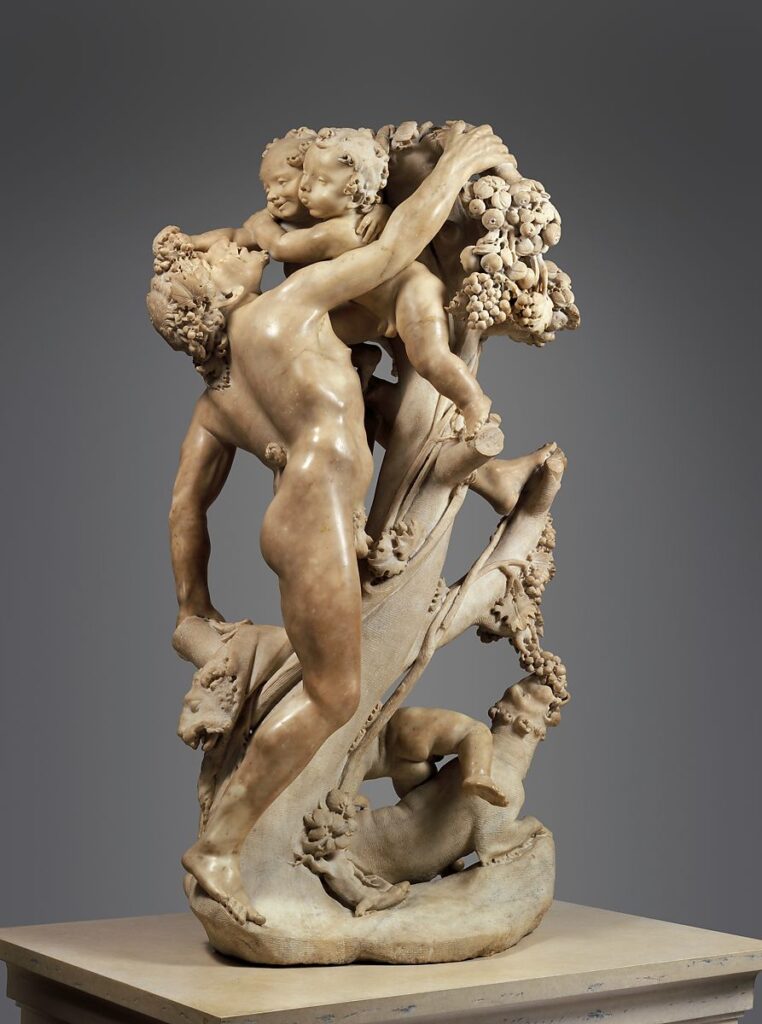
Giuseppe Arciboldo, Autumn, (1573) Parigi, Louvre
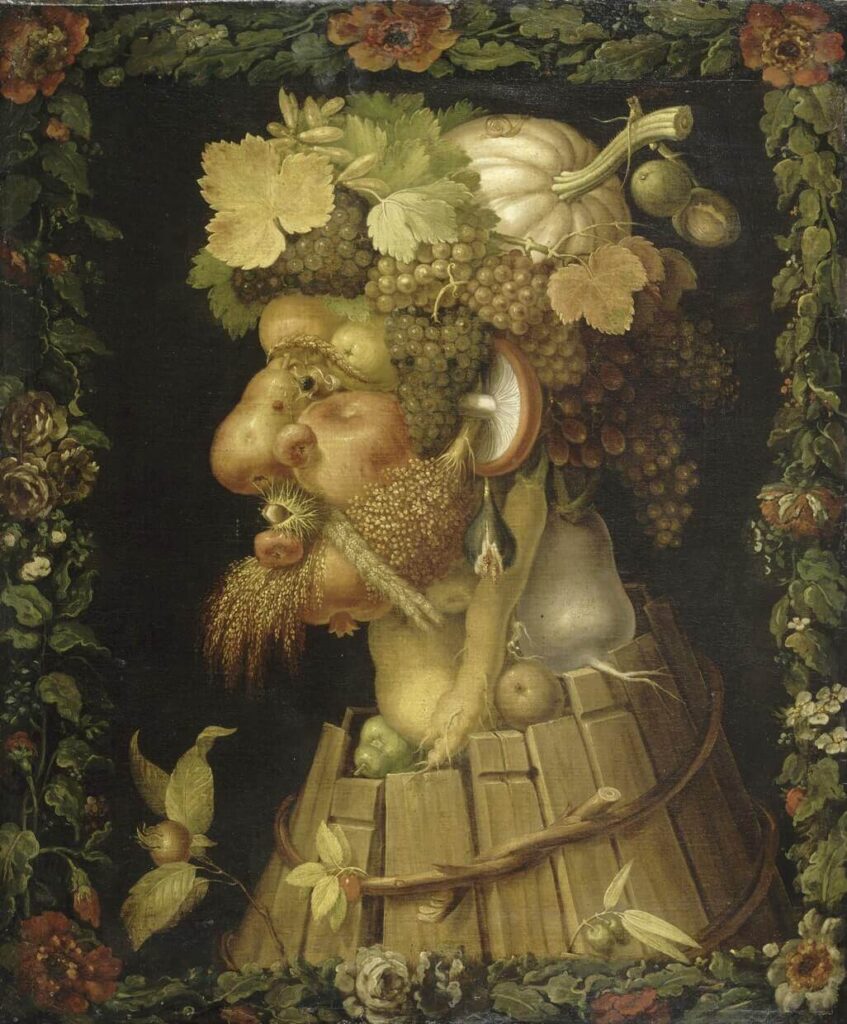
Andrea Appiani, Temperance (1808) Tremezzo (Como) Villa Carlotta

Gerog Flegel, Still Life with Herring and Flying Stag (1635) Colonia, Wallraf-Richartz Museum
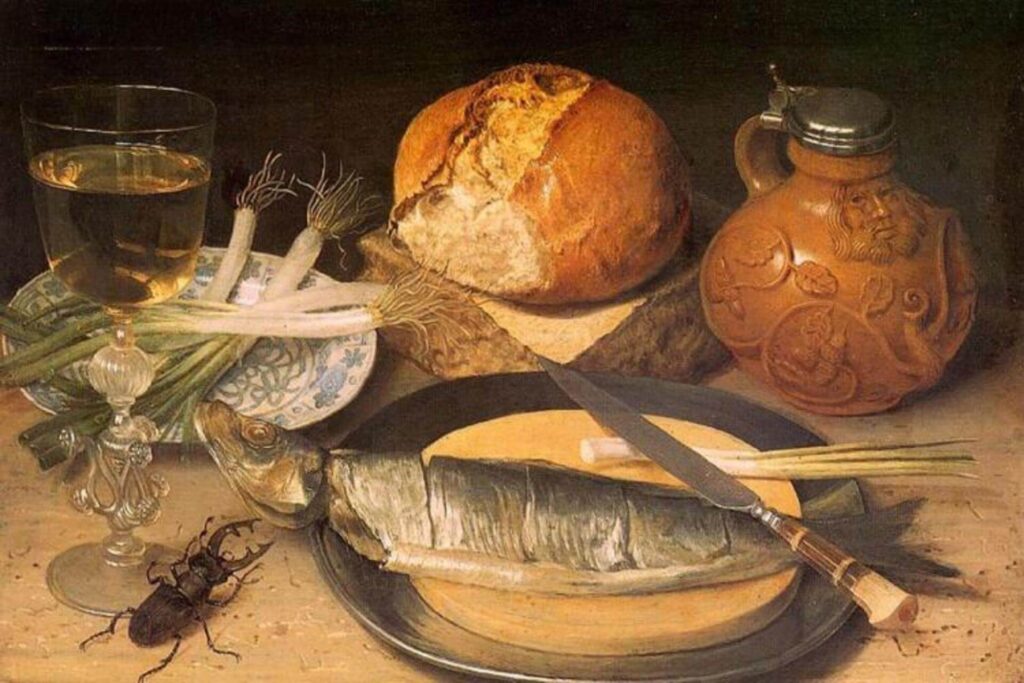
Eduard Manet, Il bar delle Folies Bergère (1881) Londram Courtauld Gallery

Wine in Art: What are the best works?
What is the best wine-themed artwork? Choosing is a difficult undertaking, which however inevitably is subject to the limits of a subjective opinion, which as such, by definition, is deficient and arbitrary. We have compiled our list of interpretations of wine in art according to our evaluations.
However, it remains essential to underline that the best wine-themed work of art is the one that is able to excite us, also by binding itself to contingent situations and unrepeatable and intimate moments of our life.
Therefore, we invite you to discover all the works where wine finds space in art, so that you can independently find and choose the work that can be counted for you as the best interpretation of wine in art.





